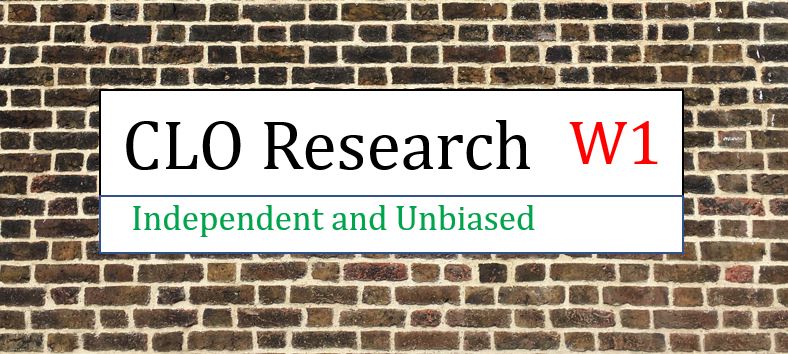US BSL CLO Managers: Rankings Based on MVOC (BB)
A sample of 1,457 US BSL CLO deals (vintage 2013–2023) is included in this study. Deals with a collateral pool...
A sample of 1,457 US BSL CLO deals (vintage 2013–2023) is included in this study. Deals with a collateral pool...
In the CLO market, AUM growth is a fundamental aspect of the business model, with scale playing a crucial role...
The table in this premium article provides the post-RP annualized prepayment rates for each deal in the sample, offering a detailed comparison of how quickly different deals paid down after their reinvestment period ended.
Given the significantly smaller base of US MM CLO AUM, it is unsurprising that annual growth has continued to remain in double figures. In contrast, US BSL CLO AUM recorded growth rates of just 3.3% and 4.3% in 2024 and 2023, respectively, both of which were lower than the 9.2% growth rate recorded in 2020.
Please refer to the table below, which displays the trends in 2.0 US BSL CLO AUM for each of the top 100 US BSL CLO managers since 2012. The year-end notional AUM (in billions of dollars) for each period is calculated based on the pricing dates of CLO deals and the notional of the underlying collateral. For a consistent comparison, the AUM figures for each manager have been adjusted for mergers and acquisitions and changes in management contracts. In 2024, 37 of the top 100 managers experienced a decrease in their assets under management. Conversely, Elmwood, AGL, and Onex significantly boosted their assets, each securing more than 10% of the total growth recorded that year. Irradiant captured the largest market share of AUM growth in 2023, with Blackstone leading in 2022 and 2021, and RRAM in 2020.
Kindly consult the table below, which illustrates the trends in 2.0 MM CLO AUM for each US MM CLO manager since 2012. The year-end notional AUM (in billions of dollars) for each period is determined based on the pricing dates of CLO transactions and the notional value of the underlying collateral.
Please refer to the table below, which displays the trends in 2.0 US CLO AUM for each of the top 100 US CLO managers since 2012. The year-end notional AUM for each period is calculated based on the pricing dates of CLO deals and the notional of the underlying collateral.
A sample of 1,456 US BSL CLO deals (vintage 2013–2023) is included in this study. Deals with a collateral pool...
Notably, EU CLO equity NAV metrics surpass those of their US BSL CLO counterparts across all vintages, despite the latter having considerably more diversified underlying portfolios, as shown in tables below. In particular, the equity NAV metrics of EU CLOs from the 2013–2014 and 2018 vintages are markedly higher than those of their US counterparts.
Please see the graph below that illustrates the trend line for 2.0 US CLO AUM since 2012. The year-end notional AUM for each period is determined based on the pricing dates of CLO deals and the notional of the underlying collateral. The year 2021 witnessed the largest increase in US CLO AUM, followed by 2014.
Market Value Over-Collateralization (MVOC), for instance, at the BB tranche level, is calculated by dividing the collateral market value (MV) by the sum of CLO liabilities (AAA to BB). MVOC is a key point-in-time metric for valuing CLO-rated tranches, widely tracked by participants in both primary and secondary markets.
In the ever-evolving landscape of collateralized loan obligations (CLOs), staying informed with the most current insights and analyses is crucial...
Our website attracts a steady stream of visitors each month, ensuring your job postings receive significant visibility among a relevant audience. Increase your chances of finding the ideal candidate by listing your opportunities on CLOPremium—completely free of charge.
February 2025: Summary of CLO Research Insights
On average, EU CLO managers have met the expectations of their equity investors. Overall, based on deals that have already been redeemed or are anticipated to be redeemed, EU CLOs have delivered good performance, with an average equity IRR of 12.4%. This success can be attributed to a combination of factors, including disciplined issuance spurred by risk retention requirements, resets of more seasoned deals such as those from 2014 and 2015, the resilience of the underlying loan performance, the expertise of the managers, favourable CLO liability costs, and attractively priced assets, among others.
